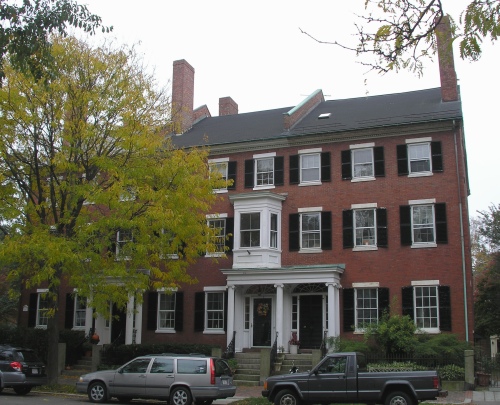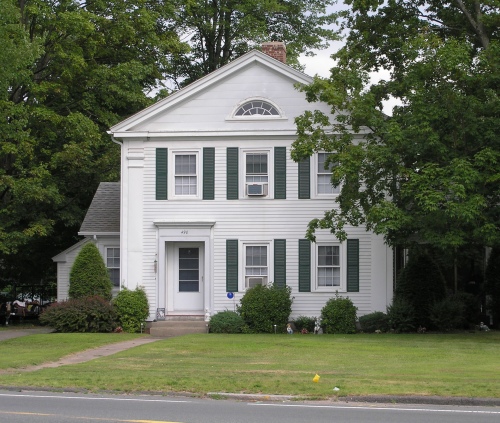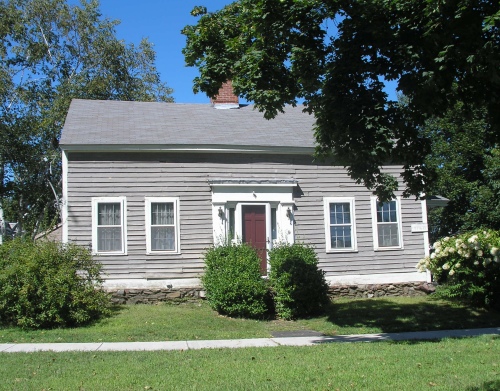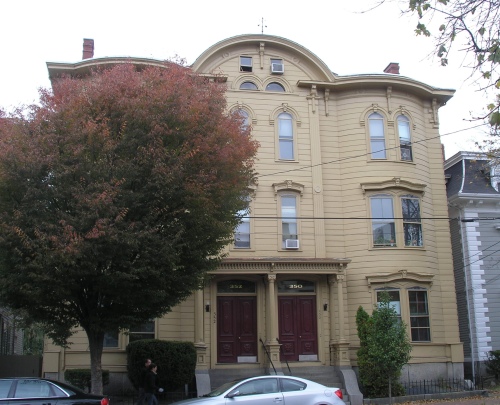Alfred White House (1902)

The Queen Anne/Colonial Revival house at 60 Fairfield Street in Springfield was built in 1904 for Alfred White.

The Queen Anne/Colonial Revival house at 60 Fairfield Street in Springfield was built in 1904 for Alfred White.

The relatively early Queen Anne house at 47 Harvard Street in Worcester was designed by Stephen C. Earle. Its first resident was Benjamin Walker, a local ice merchant. With Stillman Sweester, Walker formed the company Walker & Sweester, which later became the Walker Coal and Ice Company. From 1881 into the twentieth century, the house was home to Walker’s daughter, Agnes, and her husband, Levis White. The house’s two-story porch and painted brick walls are later alterations.

For my 101st Salem post I present the Allen-Osgood-Huntington Triple House, located at 31-33-35 Chestnut Street in Salem. It was begun in 1828-1829 by Pickering Dodge and completed after 1833 by his son-in-law, John Fiske Allen, a horticulturalist who lived in No. 31. As described in Fisk Cousins and Phil M. Riley’s The Colonial Architecture of Salem (1919):
there, in 1853, for the first time in New England, [Allen] grew and brought to flower in his greenhouse the Victoria regia, the great water lily of the Amazon, from seed obtained of Caleb Cope, of Philadelphia. The following season Mr. Allen enlarged his greenhouse and tank and obtained more seed from England, including that of the Amaryllis, Nelumbium and other tropical species of lilies which thrived and formed a rare collection much admired by many visitors. Mr. Allen published the results of his observations on the Victoria regia in a beautiful folio volume, finely illustrated by W. Sharpe from specimens grown in Salem. . . . Previous to Mr. Allen’s occupancy the house was for a time the home of Nathaniel Silsbee, United States senator from 1826 to 1835.
The middle house (No. 33) had various owners, including Captain Charles M. Endicott of the ship Friendship. In a famous incident that occurred in 1831, the ship was captured by Malays off the coast of Sumatra and then retaken in a fierce battle. In 1864, the house was purchased by George P. Osgood, whose family remained there until the 1940s. The bay window on this middle house is a Victorian-era addition. The house at the western end (No. 35) was home to three mayors of Salem: Charles W. Upham (served 1852-1853), who wrote the classic work Salem Witchcraft (1867), Asahel Huntington (served 1853-1854) and his son, Arthur L. Huntington (served 1885).

At 490 College Highway in Southwick is the parsonage of the Southwick Congregational Church. It was built in 1948 in a Greek Revival style that complements that of the 1824 church.

The house at 39 Chestnut Street in Salem was built in 1805 for Captain Thomas Saunders. It was the first of the great brick Federal-style houses to be constructed on a street famed for its architecture. In 1893 the house was remodeled in the Colonial Revival style by architect Arthur Little for owner William G. Barker. The central bay window on the second floor above the original entryway was added at that time.

The house at 9 West Silver Street in Westfield was probably built between 1811 and 1821 (c. 1815) by Aaron Phelps, who sold it in the latter year to Joseph Hedges. It remained in the Hedges family for most of the nineteenth century. From 1939 to 1969, J. Rex Adams owned the house and made some interior alterations.

At nos. 350-352 Essex Street in Salem is a late Italianate double house built in 1875. No. 352 was home to Arthur S. Rogers, treasurer of the Atlantic Car Company, and no. 350 was home to Benjamin W. Russell, a teller (later president) at the Salem National Bank.